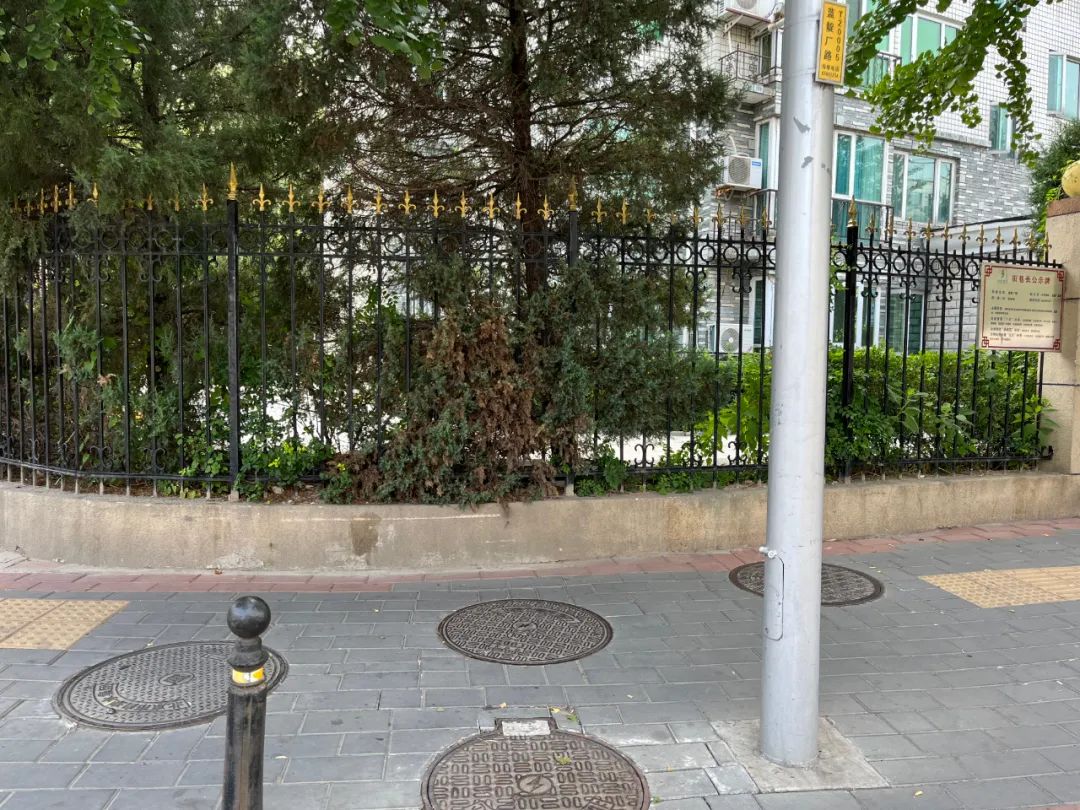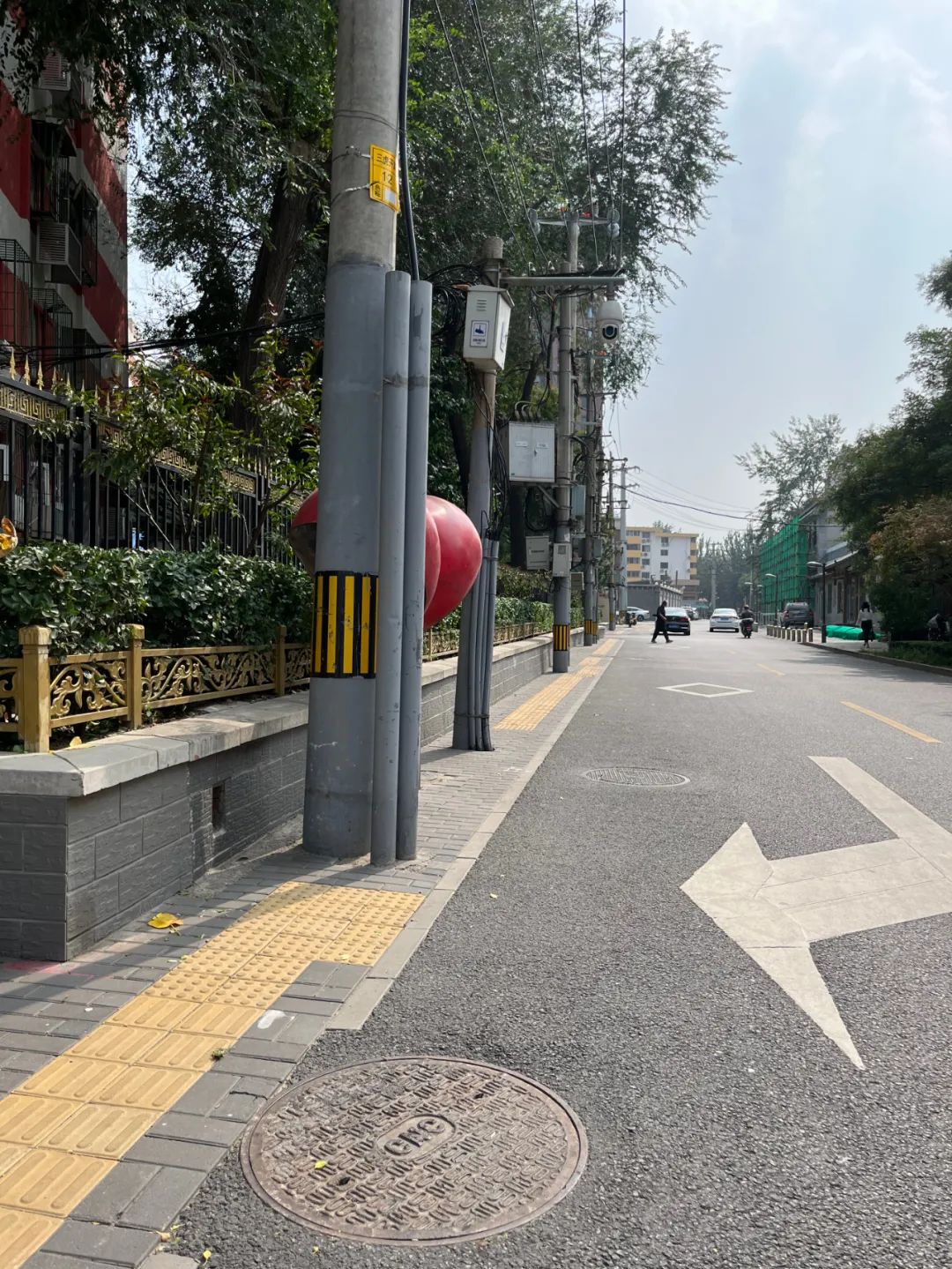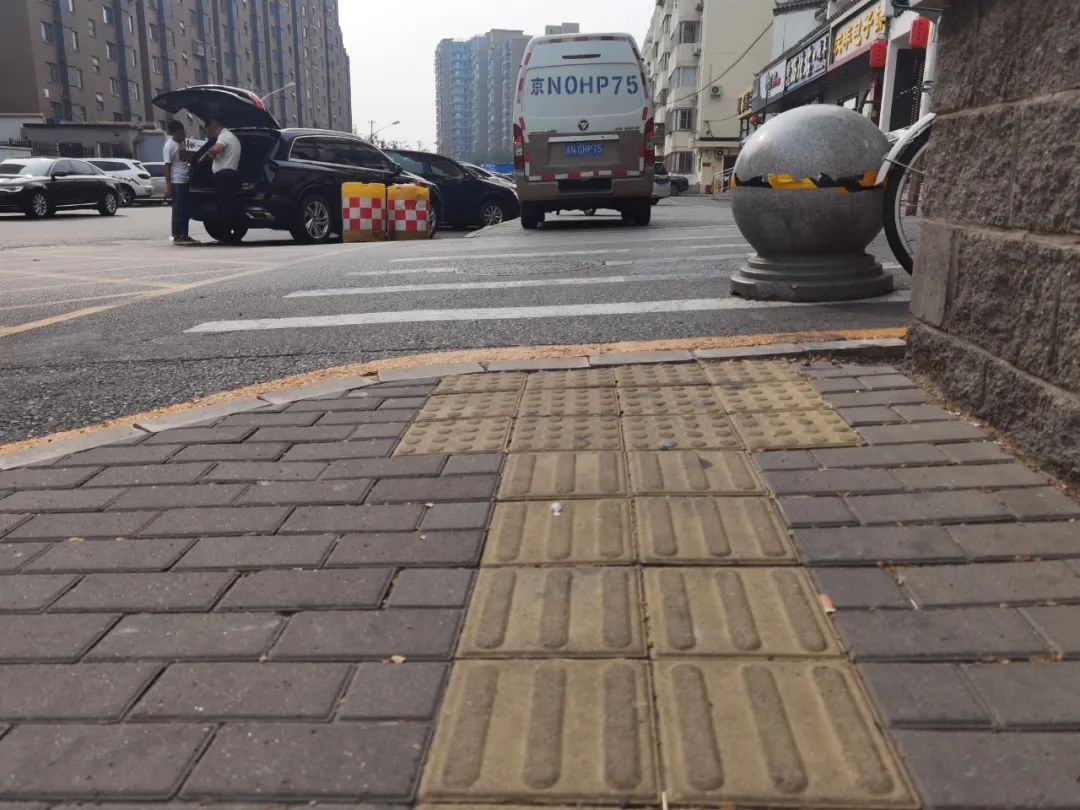Is the blind road smooth all the way now? The reporter’s field visit found that ……
Original Chinese people’s political consultative conference newspaper
In 1991, China’s first blind road was built and used in Beijing Haidian Landian Factory.
More than 30 years have passed, and on September 1, the barrier-free environment construction law was formally implemented. Is the blind road smooth all the way now? What are the remaining problems? What improvements are needed? Our reporter conducted a field visit and found that the situation is not optimistic.

In the North Road of Landianchang, Haidian District, Beijing, the reporter saw that a blind road set at the corner of the intersection was separated by four manhole covers by more than 3 meters. For a healthy person, it takes only a few steps to walk, but if you are in the dark, every step will be trembling.
Although the cut-off place is paved with a dot reminder brick, it is not easy for the visually impaired to find the starting point of the next section. The reporter blindfolded and tried many times to find the next blind road, all of which ended in failure.
In Sanhuqiao North Road, Haidian District, there is also a truncated blind road, between which there are two telephone poles and a telephone booth. At the entrance of a residential area on the south side of the driveway ditch of Zizhuyuan Road, the iron gate of the residential area directly crosses the middle of the blind road like a roadblock.

During the visit, the reporter also found that with the increase of bike-sharing and electric bicycles, it is not uncommon for blind roads to be occupied.
At the exits of Baishiqiao South Station and Erligou Station of the subway, the dense bike-sharing surrounded the blind road into a "maze". Due to the limited space, more than ten electric vehicles parked directly along the blind road. Not only that, the reporter saw many private cars and engineering vehicles crossing the blind road along the way, which was worrying.
The same situation is not uncommon. At the northeast exit of Yangzhuang subway in Shijingshan District, the blind road directly became the parking lot for electric bicycles, and several rows of electric vehicles were parked. In a section of Haidian District, the reporter saw several blind roads interrupted for various reasons on the sidewalk less than 500 meters short. There is even a situation where a high platform suddenly appears on the blind road. If the blind people pass through this section, they have to go up four or five steps and then down four or five steps before they can find a new blind road. What’s more, the blind road suddenly disappeared on the road, and at the end of the blind road, it was actually a spherical marble isolation pier nearly 1 meter high. When the blind people walked here, they were easily tripped. Moving on, the reporter found that electric vehicles occupied blind roads everywhere. In the west section of this road, because there was a big tree in the middle of the sidewalk, the blind road disappeared after turning right, but just where the blind road disappeared, it was full of bicycles, cars and trolleys of surrounding merchants.
The reporter also observed that the blind roads in some sections have collapsed, damaged and loosened to varying degrees, and the connection between the sidewalk blind roads and bus stations, subway stations and other municipal facilities is insufficient.

Mr. Jia, the supervisor of barrier-free environment construction in Beijing, told the reporter that he had persistently reported all kinds of "chaos" on this blind road to relevant departments through various channels, but "the effect was not great". Mr. Jia said that the formal implementation of the regulations is a good start, and I hope that it can be truly implemented step by step in the future to make our society truly barrier-free.
In addition, our reporter randomly visited on the way of business trip and found that there was a blind road at the departure floor of terminal T2 of Changsha Huanghua Airport, which extended to the vicinity of the check-in area. However, after the security inspection area and the security inspection passage, there is no blind road on the ground of the waiting area of the whole terminal.
On the grounds that relatives of blind people at home need to go out by plane, the reporter consulted the relevant staff, and replied that they could contact the airline in advance to handle the unaccompanied service, which would be sent to the designated place by relatives and friends, signed by the staff and sent to the plane. Upon arrival, there are also special staff to pick up the plane.
It is worth mentioning that on the way to the boarding gate, the reporter found that there are two eye-catching devices providing self-help wheelchairs in the distance of two or three hundred meters.
"Nowadays, the barrier-free environment has been greatly improved, but there are still some details to be improved. I hope that the setting of blind roads can be more humanized." Liang Jiangbo, a visually impaired person, told reporters that barrier-free facilities "are not available, but useful".
During the interview, many CPPCC members also believed that only with "heart and love" can accessibility be truly realized.
With the formal implementation of the barrier-free environment construction law, strengthening the supervision of blind roads has become increasingly prominent. Jiang Xinlu, a member of the Political Consultative Conference of Ningxia Hui Autonomous Region who submitted the Proposal on Strengthening Supervision of Blind Roads this year, called for the cooperation of the Disabled Persons’ Federation, transportation, sanitation, telecommunications, electric power and other departments in the construction, maintenance and supervision of blind roads. He suggested that in daily work, the responsibilities related to the construction, maintenance and supervision of blind roads within the management scope of departments should be implemented, and the supervision and prevention work should be strengthened so that barrier-free facilities such as blind roads can really play their due roles.
"Accessibility is not a form, but a way of life." After more than 10 years of concern and advice on barrier-free environment construction, Zhong Qian, a member of Jinan CPPCC, Shandong Province, felt most deeply that the implementation of legislation is only the first step in barrier-free environment construction. How to implement it exactly and accurately is the key, and more patience and continuous improvement are needed. Everyone is a participant, beneficiary and promoter.
The formal implementation of the barrier-free environment construction law can guarantee the disabled and other people to participate in social life independently, safely and conveniently with a higher standard. During a recent visit, the reporter found that only blind roads, a barrier-free facility, have many problems, such as missing blind roads, being occupied by non-motor vehicles, unscientific design and so on. The road to barrier-free travel for the disabled and the elderly still has a long way to go.
Original title: "Is the blind road all the way today? The reporter’s field visit found that … "
Read the original text